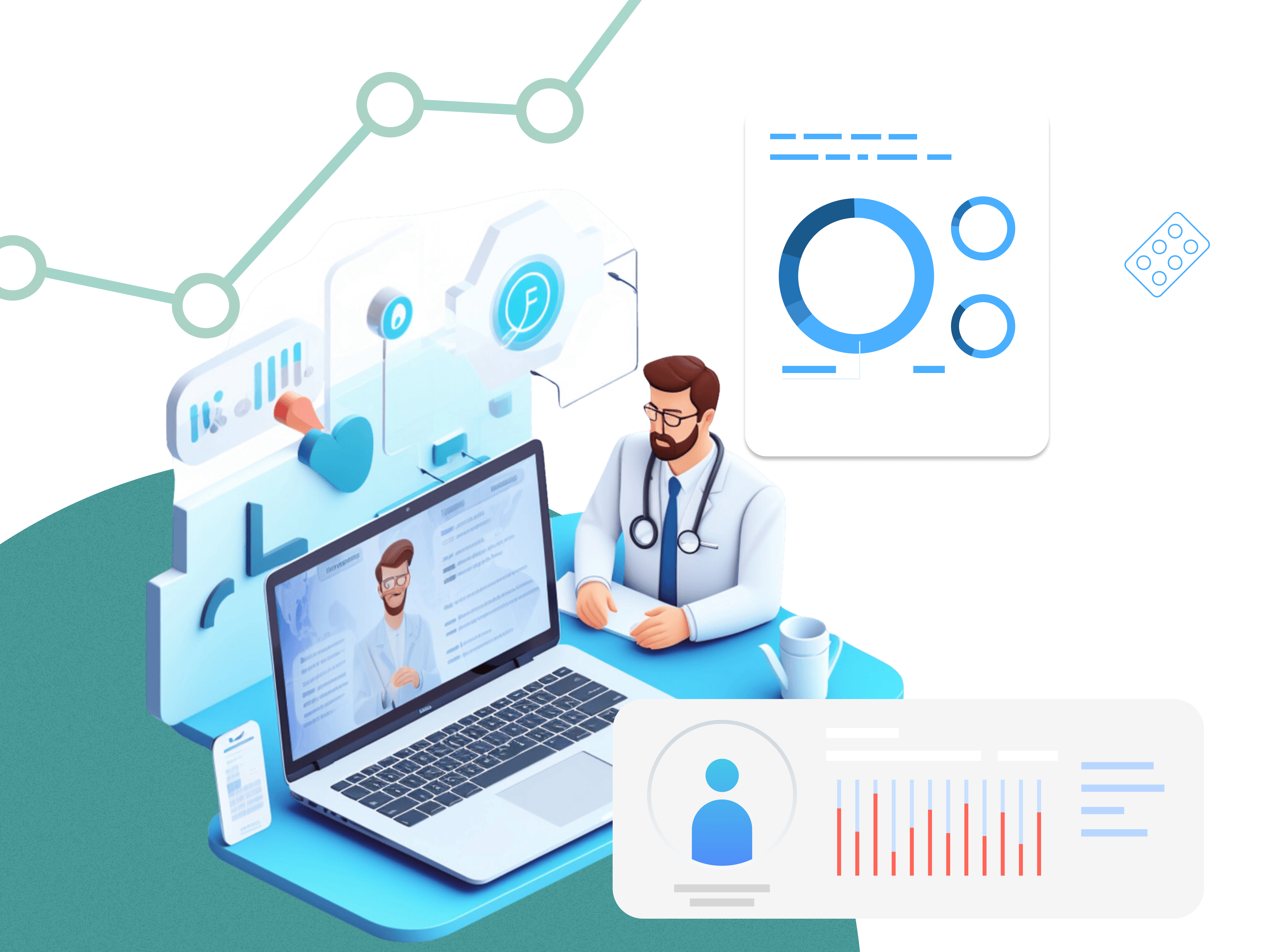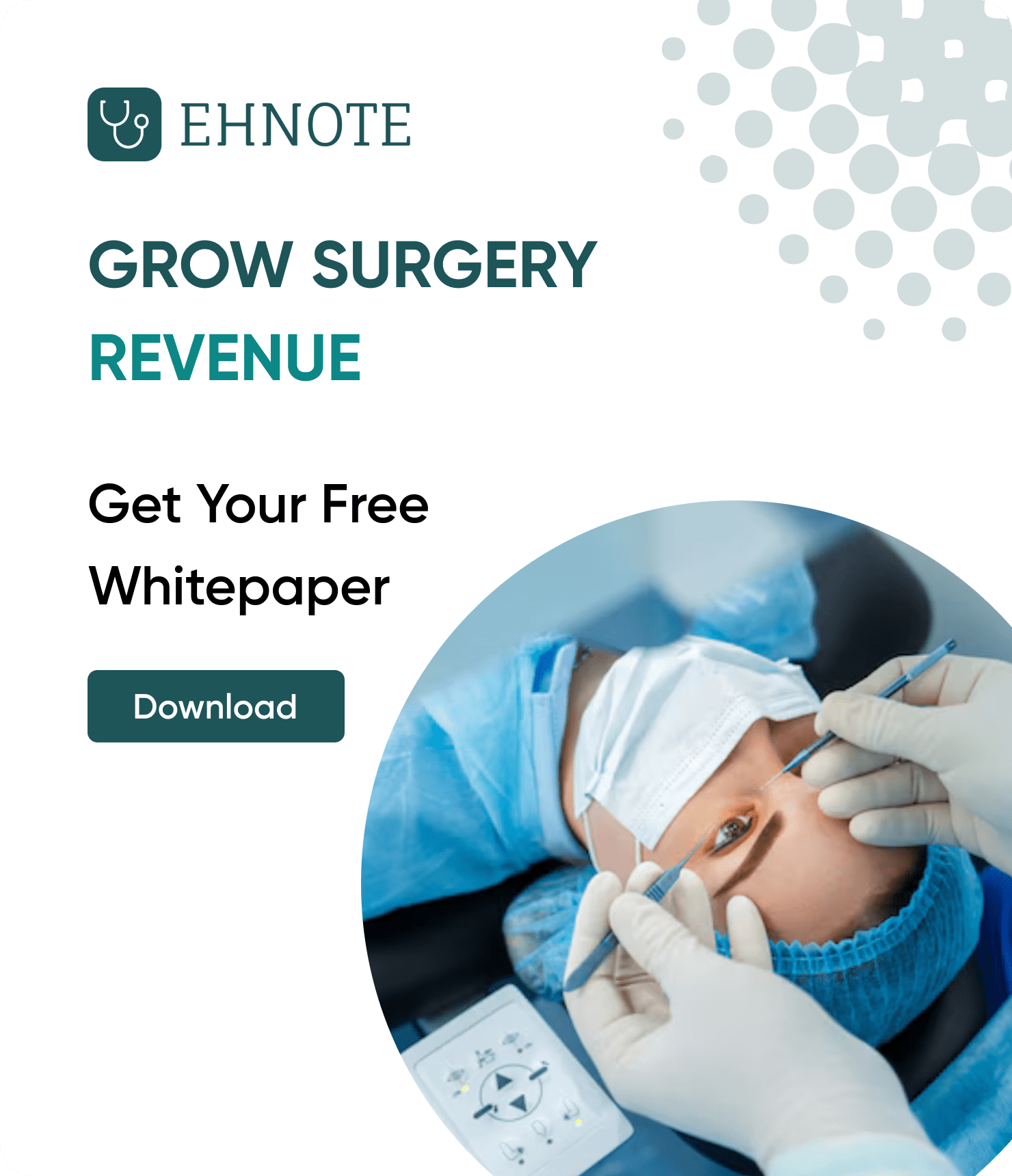How To Use EHR Data to Improve Quality, Efficiency, and Drive Growth in Ophthalmology Practices

In the dynamic field of ophthalmology, the effective utilization of Electronic Health Record (EHR) data can be a game-changer.
Your Ophthalmology EHR data isn't just about patients; it can be used to uncover the hidden patterns that are the core vitals of your practice.
Think of your EHR system not as a mere recorder but as a storyteller with the potential to redefine how we deliver and experience healthcare.
We're shifting our gaze beyond patients alone. It's about understanding the rhythms and nuances that echo through your practice, shaping a holistic view that goes beyond conventional boundaries.
In this blog post, we'll explore how we can harness the power of your Ophthalmology EHR data by going beyond the conventional approach of just storing patient records to unlock insights waiting to be uncovered – to transform your practice, leading to improved quality, streamlined efficiency, and sustained growth.
Understanding the Core Strategies
1.Data Collection and Integration: Efficient data collection and integration lies at the heart of comprehensive patient care. EHR systems offer the ability to gather information from various sources, creating a unified view of a patient's health history. This not only enhances diagnostic accuracy but also ensures a holistic approach to patient care.
2.Data Quality Management: Reliable analysis and interpretation hinge on the quality of the data at your disposal. EHR systems, when designed to address data completeness, consistency, and accuracy, become powerful tools for making informed decisions. A robust data quality management strategy is the cornerstone of effective healthcare practices.
3.Data Transformation and Analysis: Transforming raw EHR data into actionable insights is a crucial step. Advanced analytics techniques, including machine learning and statistical modeling, allow you to uncover hidden patterns and trends. This empowers you to make data-driven decisions, leading to more precise diagnoses and personalized treatment plans.
4.Clinical Decision Support: Integrating EHR data with clinical decision support systems provides real-time guidance to healthcare providers. Imagine having instant access to relevant patient data, aiding in timely and accurate decision-making. This not only enhances patient care but also contributes to better outcomes.
5.Population Health Management: Analyzing EHR data at the population level opens doors to identifying trends and targeting interventions. By understanding the broader health landscape, healthcare organizations can proactively address community health needs, ultimately improving outcomes and patient satisfaction.
6.Medical Practice Management: Efficient practice management is a linchpin in the seamless operation of any healthcare facility. Integrating EHR systems into the fabric of practice management ensures not just patient-focused care but also streamlined administrative workflows. From appointment scheduling to resource allocation, leveraging EHR data optimizes the overall efficiency of your practice, allowing you to focus more on patient care and less on administrative hassles.
7.Revenue Growth: Unlocking the full potential of EHR data isn't just about providing top-notch care; it's a strategic move toward sustainable revenue growth. By harnessing the insights embedded in your EHR, you gain a comprehensive understanding of billing patterns, resource utilization, and service demand. This knowledge equips you to optimize your revenue streams, identify areas for potential expansion, and ensure the financial health of your practice.
8.Business Growth: EHR data, when strategically utilized, becomes a catalyst for holistic business growth. Understanding patient demographics, preferences, and community health needs positions your practice at the forefront of tailored healthcare delivery. By aligning business strategies with the wealth of EHR insights, you not only expand your patient base but also foster a resilient ecosystem for sustained business growth.
The Impact on Healthcare Quality:
Below are some of the impacts unveiled by PubMed in a systematic review, where they found out that EHRs have a positive impact on several aspects of healthcare quality.
- Reducing Medication Errors: Through real-time access to patient medication histories and alerts for potential drug interactions.
- Preventing Adverse Drug Events: By providing information about patient allergies and preventing duplicate medication orders.
- Improving Guideline Adherence: Offering easy access to clinical guidelines and prompting clinicians to document guideline-recommended care.
- Enhancing Timeliness of Care: Providing real-time access to patient information and streamlining the ordering of tests and procedures.
- Enhancing Communication and Coordination: Facilitating seamless communication among healthcare providers. Efficient coordination ensures that patients receive integrated and cohesive care, minimizing misunderstandings and enhancing their overall experience.
- Tailoring Patient Education: By tailoring information to individual patient profiles, you empower them with knowledge specific to their health needs. This personalized approach not only fosters better understanding but also contributes to heightened patient satisfaction.
- Data-Driven Quality Improvement: Identifying trends and patterns in >patient outcomes administrative workflows, and resource utilization becomes a catalyst for proactive enhancements that positively impact both clinical care and overall patient satisfaction.
However, it's essential to acknowledge the nuanced impact on patient satisfaction. While some patients appreciate the benefits of EHRs, others may find certain aspects challenging. This underscores the importance of tailoring EHR usage to meet both clinical and patient needs.
Strategies in Action:
A strategic approach to EHR data utilization can revolutionize patient care in ophthalmology.
- Adoption and Use: Ensure that your team is not only familiar with EHR systems but is also trained to use them effectively. This may involve ongoing training, technical support, and incentives for embracing EHR functionalities.
- Data Quality: Strive for excellence in data quality. Implement processes that capture accurate and complete patient data, ensuring the integrity of the information stored in your EHR system.
- Clinical Decision Support: Maximize the benefits of clinical decision support embedded within your EHR. Train your team to leverage real-time guidance, enhancing the quality of care delivered.
- Performance Measurement: Utilize EHR capabilities to collect data on the quality of care provided. This data becomes a valuable tool for performance measurement, allowing you to track progress and identify areas for improvement.
- Patient Engagement: Empower patients by utilizing EHRs to engage them in their own care. Providing access to medical records and educational materials fosters a collaborative approach to healthcare.
Digital Health Data and Improved Outcomes
As we navigate the digital era, the integration of digital health data emerges as a transformative force. This data not only identifies patients at risk of diseases but also personalizes care and improves population health.
Conclusion:
In the ophthalmology ecosystem, leveraging EHR data is not just a technological advancement; it's a strategic imperative. By adopting and optimizing EHR systems, you position your practice at the forefront of quality healthcare delivery. The journey involves not only embracing the technological facets but also fostering a culture that values data-driven decision-making.
As ophthalmology professionals, you have the power to shape the future of patient care through the judicious use of EHR data.
Discover true potential of EHR data with EHNOTE! Schedule a demo now and see how EHR data can transform your eye care practice firsthand.
